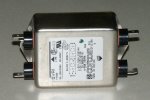kwired
Electron manager
- Location
- NE Nebraska
- Occupation
- EC
Stopping credit card payment isn't going to fix the problem it is just going to create a hardship over payment for goods purchased. Most of the fixtures they have with electronic ballasts or LED drivers are likely going to have similar problems, as well as similar luminaires sold elsewhere - so they do not have a problem that is unique to their products. I guess you can get some incandescent lights and problems will go away - unless you put them on a dimmer that causes interference, those can do that too.We threw the boxes away. It's only 8 lights. But each light has four 4ft tubes. I'll check out the brand and get back to you all.
We're going to be forced to replace them. But with what?
I think we're going to stop credit card payment to see if we can get their attention. .
As far as safety goes. If your not listening to the radio. You could miss an emergency broadcast. Say if a meteorite was going to hit the earth. Or if a local train had spilled dangerous chemicals. You'd miss it and could perish simply because you had no radio to warn you.
In this case, the owner likes to listen to talk shows. I forgot the name, but it starts with an R or Rush something like that. The title sounds like a 70's rock and roll band to me.
You want to cut down interference - you need to spend more money on something designed for that purpose. Those items you purchased likely do meet current FCC standards and as mentioned those standards may be more restrictive for some items then others depending on their intended use. Read instructions that come with the fixtures - as the store may tell you when trying to collect payment that this issue may be mentioned in them and it is not their responsibility to design/select products for your application, and chances are they didn't anyway. This is a little like filling the tank on a diesel truck with gasoline and then stopping payment on the purchase when you find out it wasn't a smart move.


